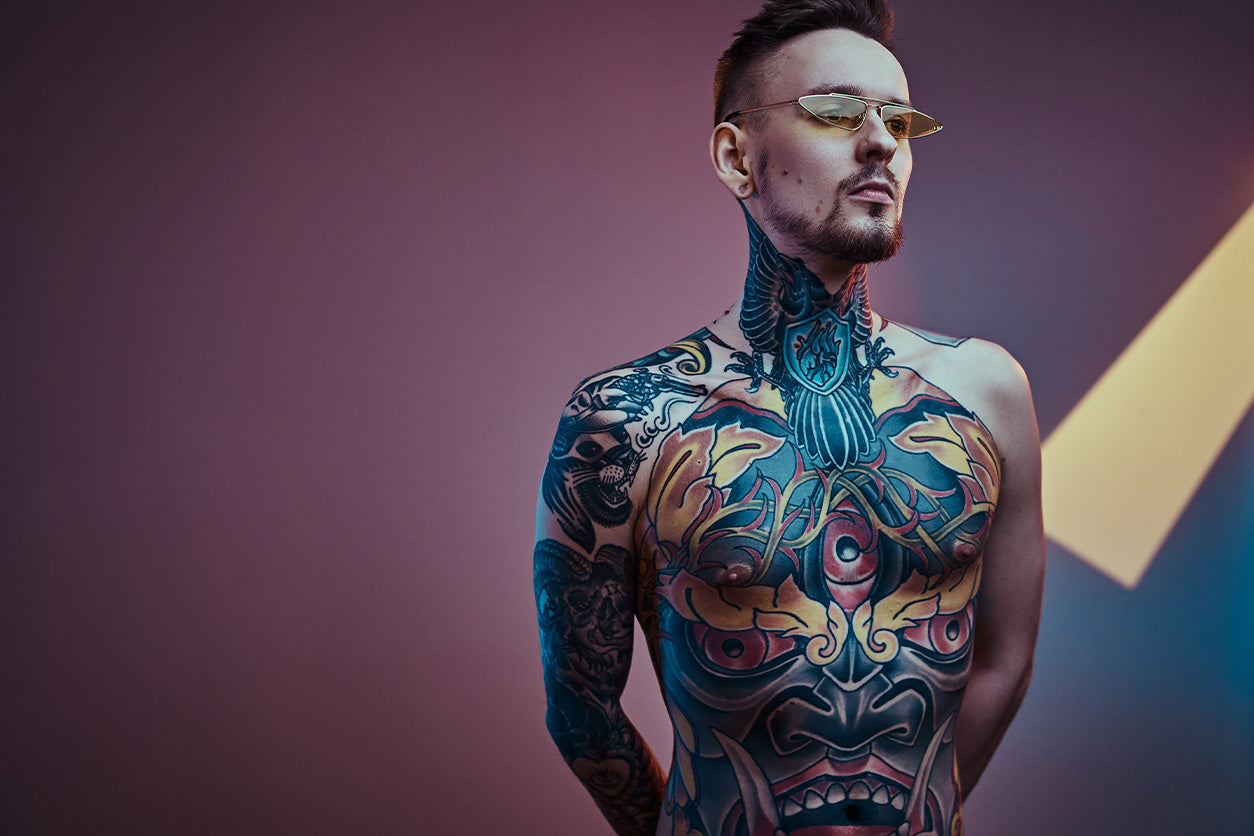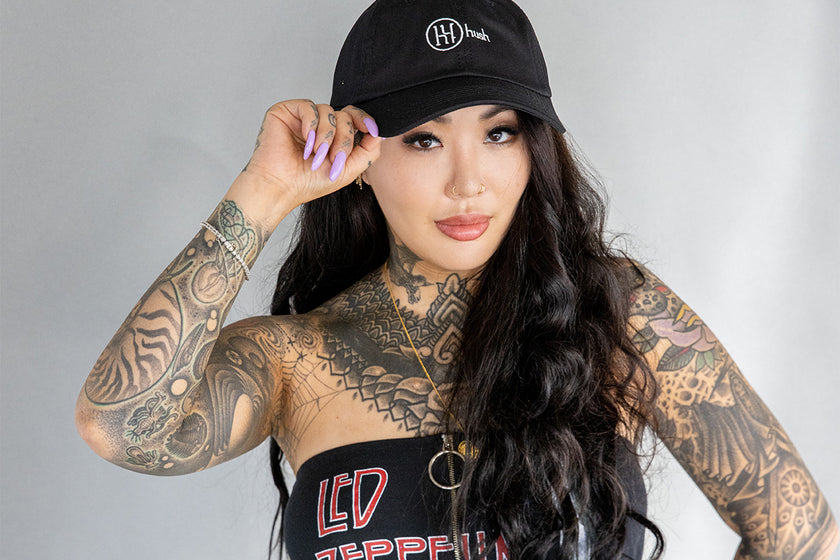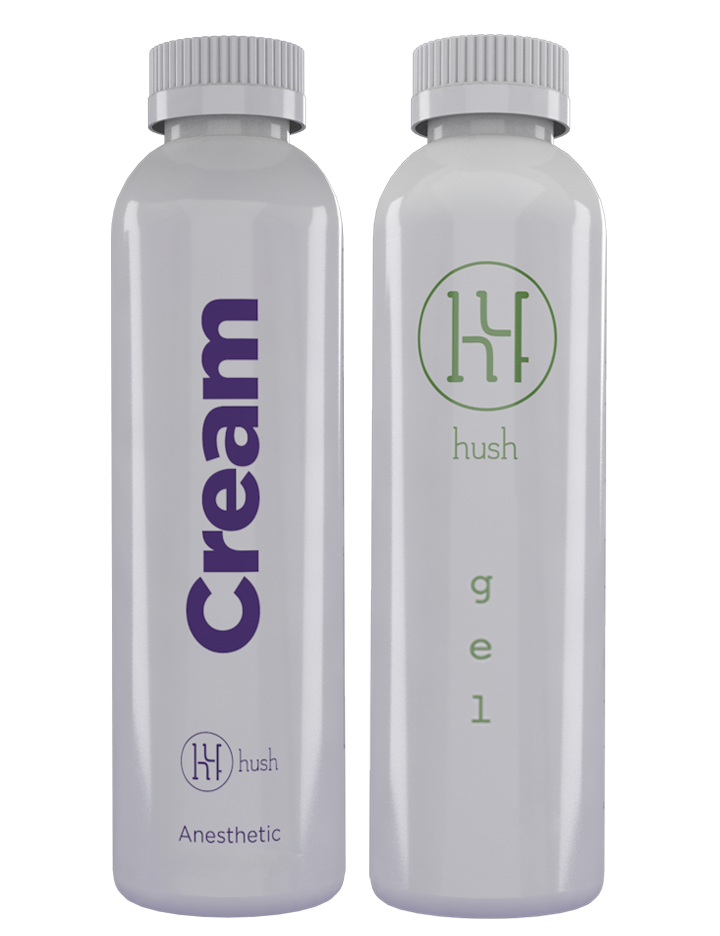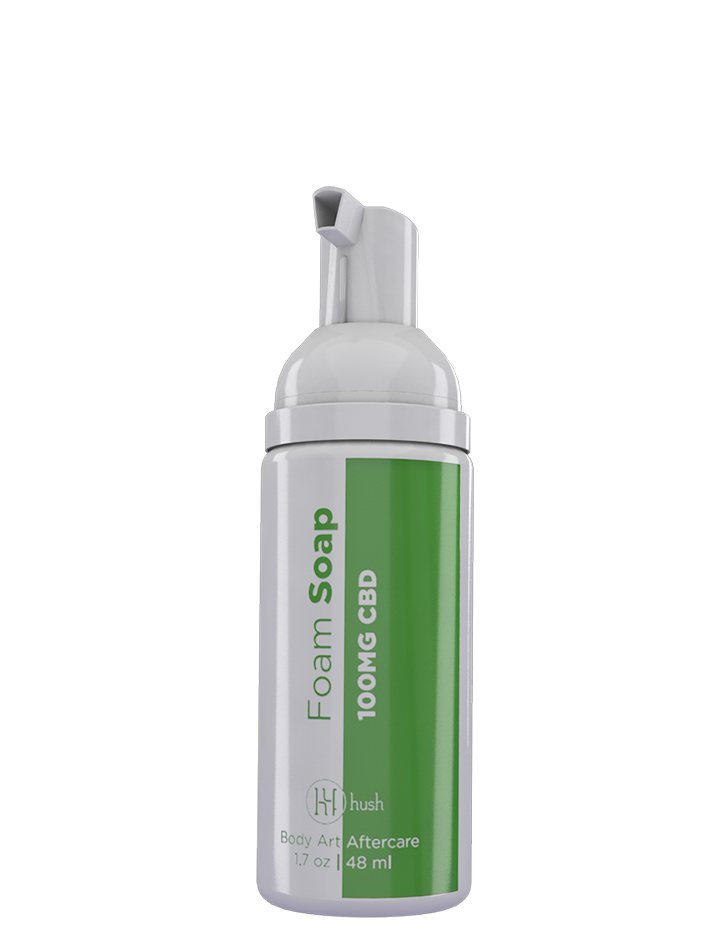Tattoos aren’t anything new. While they’ve changed a lot throughout the years, they’ve been a part of human culture for centuries. Tattoos were a part of ancient Japanese culture, eventually evolving into the traditional Japanese tattoo designs we’re more familiar with today.
The perception and uses of tattoos in Japan have changed with time, but they’ve always been an important part of Japan’s cultural history.
What Are the Origins of Tattoo Culture in Japan?
As far back as the year 5000 BCE, the people of Japan utilized tattoos as an art form. While we don’t have any photographic evidence of ancient Japanese people with tattoos on their faces, Japanese art and artifacts from the period tell the story.
Statues, drawings, and carvings depict people with large designs emblazoned across their faces and bodies. Historical accounts from witnesses describe heavily tattooed people from Japan.
While tattooing faces and bodies likely went on for hundreds of years, it came to mean something else. It used to be commonplace in early Japanese society, but the practice soon gained negative connotations.
Tattoos such as the notorious Yakuza tattoos became brands for criminals and ne'er-do-wells. People accused of crimes in early Japan were given face tattoos to shame them permanently. When you saw someone with a face tattoo, you were less inclined to trust them. Face tattoos continued to be criminal punishment for approximately 1,000 years.
It took several centuries for Japanese culture to change its relationship with tattoos. The negative stigma tying tattoos to criminals was difficult to wash away. It wasn’t until the late Edo period that common people were interested in experimenting with body art again.
What Is Irezumi?

Irezumi, or traditional Japanese tattoo art, slowly began to gain traction in the 18th century. Around this time, Japan was experiencing an artistic revival. Woodblock print art, a process of making painting prints by carving an image into a block of wood and stamping it onto a surface, saw a surge in popularity.
Many people liked the simple lines of woodblock print art, and eventually, they realized that this style would make excellent tattoos. During this time, Japan was still a very classist society.
Workers were viewed in a lower social standing, equivalent to gangs like the Yakuza. Groups of people regarded as lower-class by the powers that ruled Japan all united around their love for tattoos, and the people in power banned those of lower social class from getting tattoos.
In 1872, it was made illegal to have a tattoo as a person who lived in Japan. There is some speculation that the ban on tattoos was targeted toward members of the Yakuza gang. Since criminals often had tattoos and the Yakuza were criminals, it’s believed that they used voluntary tattoos to disguise criminal branding tattoos as a clever way to circumvent their punishment.
The practice of tattooing was never specifically banned, which left room for early Japanese tattoo artists to tattoo people who weren’t from Japan. Japanese people still tattooed each other in secret, and it would be many years before enough foreigners visited the country to serve as legal human canvases for Japanese tattoo artists.
As the 19th century rolled in, sailors and travelers who visited the country quickly took an interest in traditional Japanese tattoos. Many came to Japan without tattoos and left the country fully adorned with beautiful cherry blossommotifs or intricate koi fish tattoos.
Sailors and travelers would move on to their next destination, and their tattoos would catch the eyes of admirers in every country. This inadvertently put Japan on the map as a tattoo hotspot.
Traditional Japanese Tattoos Rose in Popularity
Traditional Japanese tattoos found themselves circling the globe, sparking interest around the world. Some Japanese tattoo artists immigrated to other countries, where they could share their art freely with the people who valued it most.
Japanese tattoo artists found themselves with a lot of time, space, and room for creativity. They were able to practice art from Japanese folklore freely. Japanese dragon tattoos, hannya mask tattoos, and Oni demon tattoos worked their way into Irezumi tattoo culture.
Symbols of good luck could be found in hand tattoos, and flower tattoos signifying rebirth or Japanese snake tattoos symbolizing protection took the form of full-body tattoos.
Tattoos also became much larger, because people were far less concerned with hiding them. A geisha tattoo could fill a whole bicep.
People who were deeply passionate about the art form would commit to several sessions for a full-back tiger tattoo, a half-sleeve of mythical creatures, or a full-sleeve tattoo featuring Japanese staples like peonies, chrysanthemums, Oni masks, and traditional lettering.
Artists had tons of space to work with and a tremendous amount of creative license, ultimately shaping Japanese tattoo art as we know it today.
What Are Kanji Tattoos?

Kanji tattoos are tattoos of Japanese writing using Chinese characters. Kanji tattoos aren’t a part of the authentic Japanese tattoo style. They’re more of an American thing.
Since they’re an American trend, they’re often tattooed by an artist that doesn’t speak or understand the languages involved. They’re usually flash tattoos, and they’re not vetted for accuracy.
As you can imagine, this leaves much room for tragic misinterpretation. Mishaps occur all the time. Many Kanji tattoos don’t actually mean what people believe they mean, and lessons have been learned the hard way.
Many people learned the lesson secondhand when Ariana Grande thought she was getting a tattoo that said “seven rings,” but it actually said “small charcoal grill.” That mistake got a lot of people talking about Kanji tattoos, especially people of Asian ancestry, who were quick to point out that Kanji tattoos are almost always incorrect.
Kanji is a highly specific writing system, and a tiny mistake can dramatically change the entire meaning of a word or sentence. It’s up to you if you want to take that risk.
Are Tattoos Controversial in Modern Japan?
While tattoo culture is undeniably linked to Japan, the country itself isn’t fond of tattoos. Tattoos are viewed as unprofessional or even offensive in many parts of Japan.
Places where people show a lot of bare skin, like bathhouses, public pools, beaches, and gyms, often prevent people with visible tattoos from entering. While having a tattoo or getting a tattoo isn’t illegal in Japan, the government makes it very difficult for tattoo artists to practice.
The country considers giving someone a tattoo a medical act, and they require that tattoo artists obtain medical practitioner licenses to tattoo. This process is extremely prohibitive. It takes a lot of time (and a lot of money) to essentially become a doctor.
People who want to be tattoo artists aren’t willing to go through medical school, especially since they have no intention of using their credentials in a medical environment.
Most tattoo shops in Japan are hidden and operate outside of the law. Japanese tattoo artists don’t advertise, and finding a tattoo shop is very difficult. They don’t want to face the consequences of their trade.
The government reserves the right to arrest tattoo artists practicing without a medical license, and they can face up to three years in jail for tattooing. It doesn’t matter if they’re using the same health and safety standards that a tattoo artist would use in any other developed country.
These laws have been enforced as recently as 2015 when a popular Japanese tattoo artist was made to pay a substantial fine. This drew the attention of Japan’s large community of underground tattoo artists who want to practice legally and safely.
They’re calling for a tattoo revolution, and we’re rooting for them.
Should I Get a Traditional Japanese Tattoo?

If you’re ready to get a traditional Japanese tattoo, Japan might not be the best place to get it. Their laws are very restrictive for their artists. Many Japanese tattoo artists travel the world, and some have immigrated to the UK and the United States to practice freely.
Start browsing portfolios to find a traditional Japanese tattoo artist that passes the vibe check. It might be worthwhile to take a long trip if you find the perfect artist somewhere far away. Great things are worth the wait.
Consider your tattoo ideas carefully. Traditional Japanese tattoo art involves a lot of mythology specific to their culture and history. It’s awesome to pay homage to their folklore, but make sure you understand what you’re getting.
While Japanese phoenix tattoos look stunning, you don’t want to mix up a symbol of good fortune with a bad omen if that’s not what you’re going for. HUSH is always here to help you with your tattoo aftercare.
Our aftercare kit can help your new Japanese tattoo heal up beautifully. Our kit of CBD-infused tattoo care products protects and nourishes your tattoo as it heals. Our antiseptic anesthetic spray works to support the body’s wound-healing process and soothes any discomfort that occurs as your tattoo heals.
Sources:
Key Characteristics of Japanese Mythology | History Cooperative




